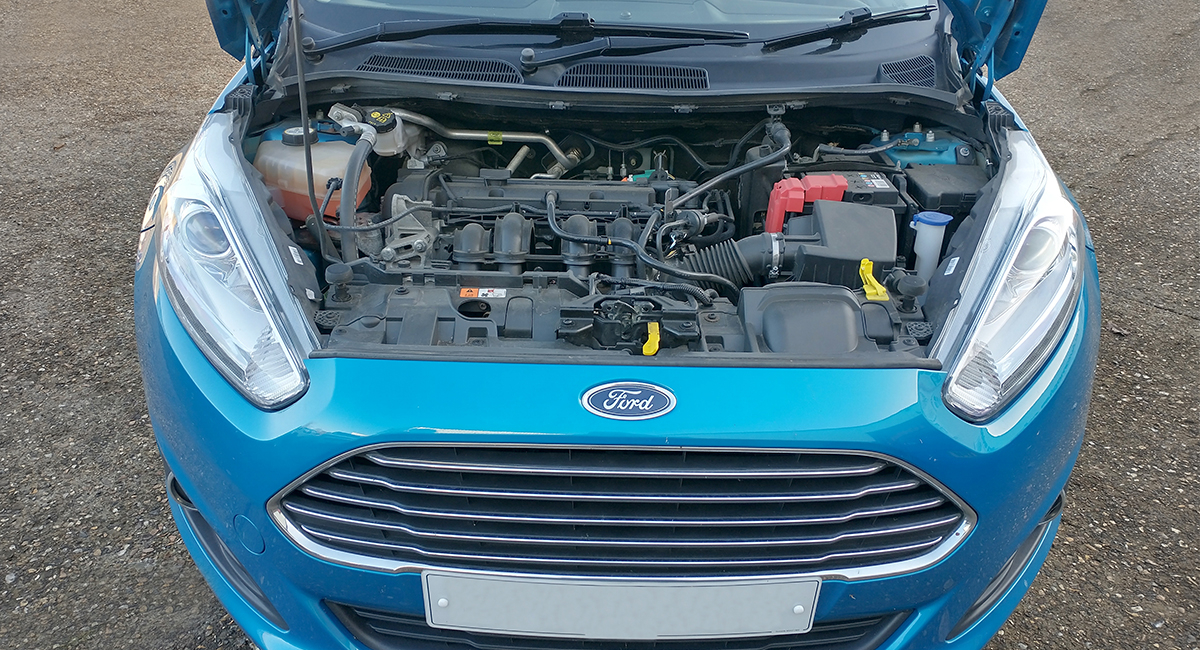Opening the Power of Engines: A Comprehensive Guide to Efficiency and Performance
Recognizing the complex technicians of engines is critical for both performance lovers and day-to-day vehicle drivers. The solutions might redefine our technique to engine efficiency and effectiveness in means that are both informing and necessary.
Recognizing Engine Fundamentals
What makes up the fundamental auto mechanics of an engine? At its core, an engine is a device designed to transform gas into mechanical energy with a series of controlled surges or combustion processes. The key components consist of the cyndrical tube, piston, crankshaft, camshaft, and valves. The cylinder acts as the chamber where burning happens, while the piston moves within the cyndrical tube to transform the energy from combustion right into direct motion (ford fiesta engine).
The crankshaft after that transforms this straight movement right into rotational energy, which ultimately powers the automobile. The camshaft controls the opening and closing of the shutoffs, controling the consumption of air and fuel and the expulsion of exhaust gases. In addition, the engine depends on a very carefully calibrated fuel-air blend, ignition system, and cooling system to make certain ideal efficiency and effectiveness.
Recognizing engine fundamentals additionally involves identifying the importance of engine cycles, such as the four-stroke cycle, which consists of intake, exhaust, compression, and power strokes. Each stage is vital in guaranteeing the engine operates efficiently and efficiently. Proficiency of these fundamental auto mechanics lays the groundwork for checking out extra complex engine characteristics and efficiency metrics, important for enhancing both power result and efficiency.
Secret Efficiency Metrics
Trick efficiency metrics are important for reviewing an engine's efficiency and power output, supplying beneficial understandings for both consumers and makers. These metrics offer as benchmarks for engine performance, enabling notified decisions in design, buying, and production.
Among the key metrics is horse power, which evaluates the engine's ability to carry out job over time. Torque, determined in pound-feet, is an additional vital metric that indicates the engine's rotational force, directly affecting velocity and towing capacity. Gas performance, commonly gauged in miles per gallon (MPG) or liters per 100 kilometers (L/100km), assesses how properly the engine transforms gas into motion, influencing functional expenses and environmental considerations.
In addition, thermal effectiveness steps how well an engine transforms gas energy right into beneficial work, revealing understandings into energy losses largely with heat. Emission degrees, including carbon dioxide and NOx, are additionally vital, showing the engine's ecological effect and compliance with governing requirements.

Tuning Methods for Performance
Tuning strategies play a substantial duty in boosting engine performance by maximizing efficiency metrics recognized in earlier conversations (ford fiesta engine). Numerous approaches exist to make improvements an engine, each adding to boosted gas economic situation and lowered exhausts
One reliable strategy is adjusting the air-fuel ratio, making certain the engine runs within the optimum combustion routine. A leaner blend can improve fuel effectiveness, but it should be stabilized to prevent misfires or engine knock. Furthermore, reprogramming the engine administration system can alter parameters such as ignition timing, which even more boosts performance while keeping power outcome.
One more crucial strategy includes changing the consumption and exhaust systems. Upgrading to high-performance air filters and exhaust headers can reduce back stress, assisting in much better airflow. This permits the engine to breathe even more easily, resulting in enhanced burning efficiency.
In addition, the application of advanced adjusting tools, like dyno screening, offers specific data that enables targeted Full Article modifications. On a regular basis keeping an eye on these performance metrics makes sure that tuning efforts generate the desired performance outcomes. Jointly, these techniques not only bolster engine performance yet also add to long-term sustainability in engine procedures.
Upkeep for Optimal Efficiency
Regular engine maintenance is crucial for accomplishing optimum performance and durability. A properly maintained engine not only operates successfully but likewise decreases the risk of expensive fixings and breakdowns. Secret parts requiring regular interest consist of oil, filters, belts, and trigger plugs.
Changing the engine oil at suggested periods is critical, as oil lubricates moving components and protects against getting too hot. Replacing oil and air filters makes sure that impurities do not impair engine function. Overlooking these elements can lead to lowered performance and potential engine damage.
In addition, examining and replacing worn belts and tubes is crucial to avoid abrupt failings. Timing belts, particularly, ought to be replaced according to the maker's routine to prevent disastrous engine damages.
Glow connects must likewise be inspected and replaced as necessary, because they play a vital function in ignition and fuel efficiency.
Future Trends in Engine Technology
Embracing innovations in innovation, the future of engine design is positioned to transform efficiency and effectiveness throughout different applications. Hybrid and completely electric powertrains are ending up being increasingly conventional, providing lowered discharges and boosted fuel effectiveness.
Moreover, advancements in materials scientific research are leading to lighter, stronger parts that enhance engine efficiency while reducing power consumption. Advanced production click to read strategies, such as 3D printing, enable for the production of complex geometries that enhance air movement and her response thermal management, therefore maximizing combustion procedures.
In addition, the integration of man-made intelligence and artificial intelligence is readied to transform engine diagnostics and performance tuning. These technologies can assess large quantities of information in real time, enabling anticipating upkeep and customized performance enhancements.
Final Thought
Finally, unlocking the power of engines requires a detailed understanding of their mechanics and performance metrics. Carrying out efficient adjusting strategies and sticking to regular maintenance practices substantially improve engine capacities. As the auto landscape evolves, embracing future trends in technology, including electrification and advanced manufacturing, will be essential for optimizing performance and efficiency. This comprehensive method not just advantages lovers however likewise contributes to sustainable services in the realm of automotive engineering.
Additionally, the engine counts on a meticulously adjusted fuel-air mixture, ignition system, and cooling down system to make sure optimal efficiency and efficiency.
Recognizing engine fundamentals also includes recognizing the value of engine cycles, such as the four-stroke cycle, which includes consumption, compression, exhaust, and power strokes. Proficiency of these fundamental technicians lays the groundwork for checking out more complicated engine characteristics and performance metrics, crucial for enhancing both power result and efficiency.

Accepting improvements in innovation, the future of engine style is poised to transform efficiency and performance throughout different applications.
 Jenna Von Oy Then & Now!
Jenna Von Oy Then & Now! Julia Stiles Then & Now!
Julia Stiles Then & Now! Jane Carrey Then & Now!
Jane Carrey Then & Now! Bill Cosby Then & Now!
Bill Cosby Then & Now! The Olsen Twins Then & Now!
The Olsen Twins Then & Now!